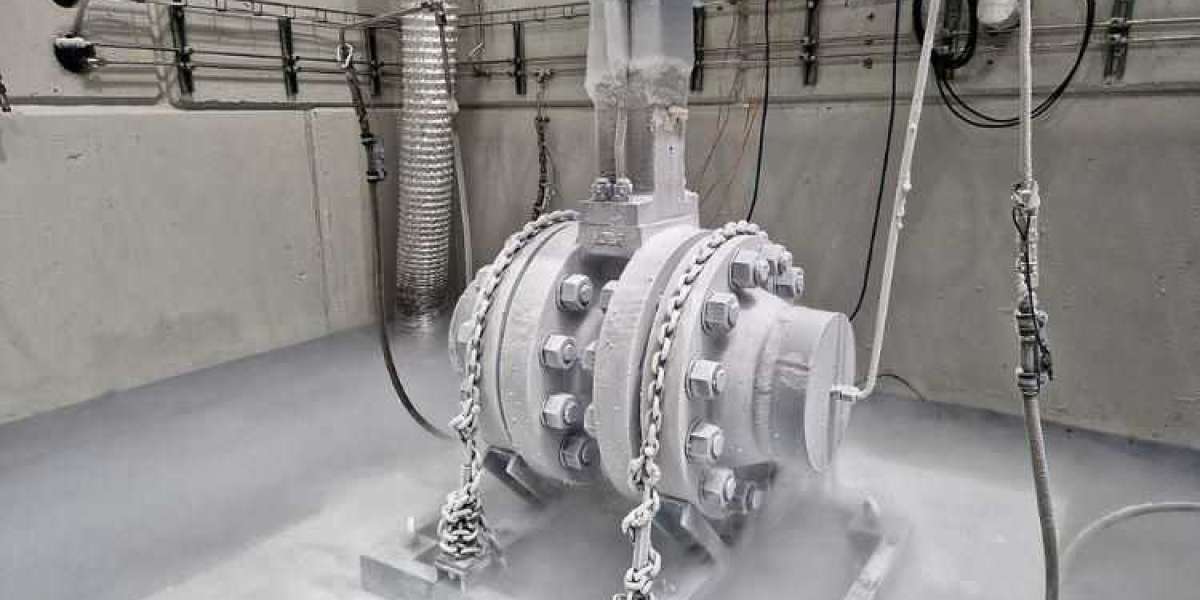The global cryogenic valve market size attained a value of USD 3.94 billion in 2023. The market is further expected to grow at a CAGR of 6.0% between 2024 and 2032, to reach a value of USD 6.68 billion by 2032. Cryogenic valves, essential for managing the flow of extremely cold liquids and gases, are increasingly critical across various industries. As the demand for efficient and safe handling of cryogenic substances grows, the market for cryogenic valves is poised for significant expansion. This blog post delves into the market's segmentation, regional analysis, dynamics, competitive landscape, and future forecasts to provide a comprehensive overview of this burgeoning industry.
Market Segmentation
By Type
- Globe Valve: Known for its excellent throttling capabilities, the globe valve is ideal for applications requiring precise flow control. Its design ensures minimal leakage, making it suitable for critical operations.
- Gate Valve: Valued for its low-pressure drop and bidirectional flow, the gate valve is a reliable choice for isolation services. Its ability to provide a tight seal when fully closed makes it indispensable in cryogenic applications.
- Check Valve: This valve type prevents backflow and ensures unidirectional flow, crucial in systems where contamination prevention is key.
- Ball Valve: Ball valves offer quick shutoff and are easy to operate, providing efficient flow control. Their durability and tight sealing capabilities are particularly beneficial in handling cryogenic gases.
- Others: Including butterfly valves and plug valves, these types cater to specific requirements within the cryogenic industry, offering unique advantages in terms of flow control and sealing.
By Gas
- Nitrogen: Widely used in industrial processes, nitrogen's cryogenic applications range from food preservation to semiconductor manufacturing. Cryogenic valves in nitrogen service must handle extreme cold and maintain purity standards.
- Oxygen: Critical in medical and industrial applications, oxygen's highly reactive nature demands valves with exceptional sealing and material compatibility.
- LNG (Liquefied Natural Gas): The booming LNG market requires robust cryogenic valves capable of handling large volumes and ensuring safety in transport and storage.
- Others: Including argon, helium, and hydrogen, these gases have specialized applications that necessitate high-performance cryogenic valves.
By End Use
- Energy and Power: The transition to cleaner energy sources, like LNG, is driving demand for cryogenic valves in power generation and distribution.
- Chemicals: Cryogenic valves are essential in chemical processing, where they manage the flow of supercooled reactants and products.
- Food and Beverage: Used in freezing and preservation, cryogenic valves help maintain the integrity and safety of food products.
- Healthcare: In medical applications, cryogenic valves ensure the safe handling of gases used in cryotherapy and other treatments.
- Others: This category includes aerospace, electronics, and other industries where cryogenic technology is vital.
By Application
- Detailed analysis of major applications shows cryogenic valves are integral to processes requiring precise control and safe handling of cryogenic substances. Emerging applications, such as in quantum computing and space exploration, highlight the expanding role of these valves.
Regional Analysis
- North America: Leading the market due to advanced technological adoption and substantial investments in LNG infrastructure.
- Europe: Strong demand driven by chemical manufacturing and stringent safety regulations.
- Asia Pacific: Rapid industrialization and increasing energy needs make this region a significant growth market.
- Latin America: Growing energy sector and industrial activities boost the demand for cryogenic valves.
- Middle East and Africa: The focus on expanding LNG capacities and petrochemical projects drives market growth.
Market Dynamics
Drivers
- Increasing demand for LNG and its transportation
- Technological advancements enhancing valve performance and safety
- Growing applications in healthcare and food preservation
Restraints
- High initial costs and complex installation processes
- Stringent regulatory standards impacting manufacturing and operations
- Economic fluctuations affecting investments in key industries
Opportunities
- Expanding markets in developing regions
- Innovations in valve design and materials to improve efficiency and durability
- Strategic partnerships and mergers enhancing market presence
Trends
- Adoption of smart valves with advanced monitoring capabilities
- Emphasis on sustainability and energy efficiency in valve design
- Increasing RD investments to cater to niche applications
Competitive Landscape
- Key Players: Companies like Emerson Electric Co., Flowserve Corporation, and Parker Hannifin Corporation lead the market with their extensive product portfolios and innovative solutions.
- Strategies: Major players focus on technological advancements, strategic acquisitions, and expanding their geographical reach to maintain a competitive edge.
- Recent Developments: Notable mergers and acquisitions, product launches, and technological innovations are shaping the competitive landscape.
Forecast (2024-2032)
- Market Size and Growth Projections: With a steady CAGR of 6.0%, the cryogenic valve market is set to grow from USD 3.94 billion in 2023 to USD 6.68 billion by 2032.
- Segment-wise and Regional Forecasts: Energy and power sectors, along with the Asia Pacific region, are expected to lead market growth.



